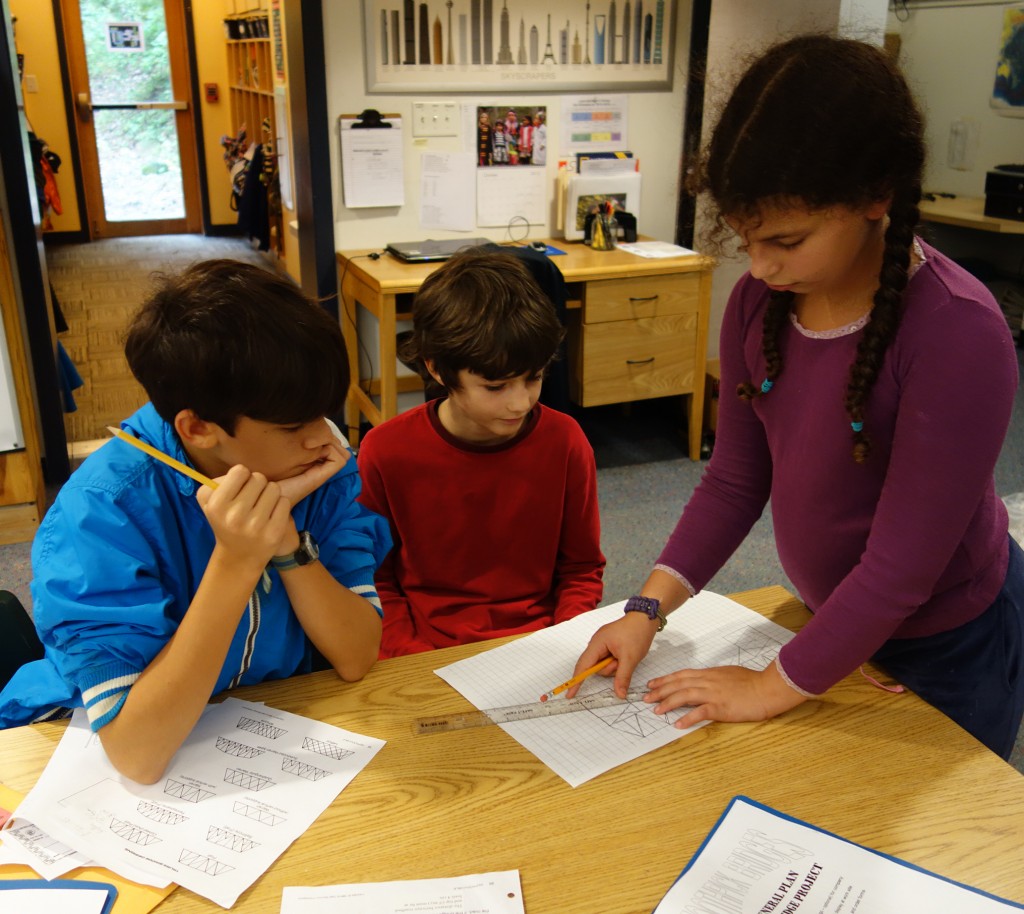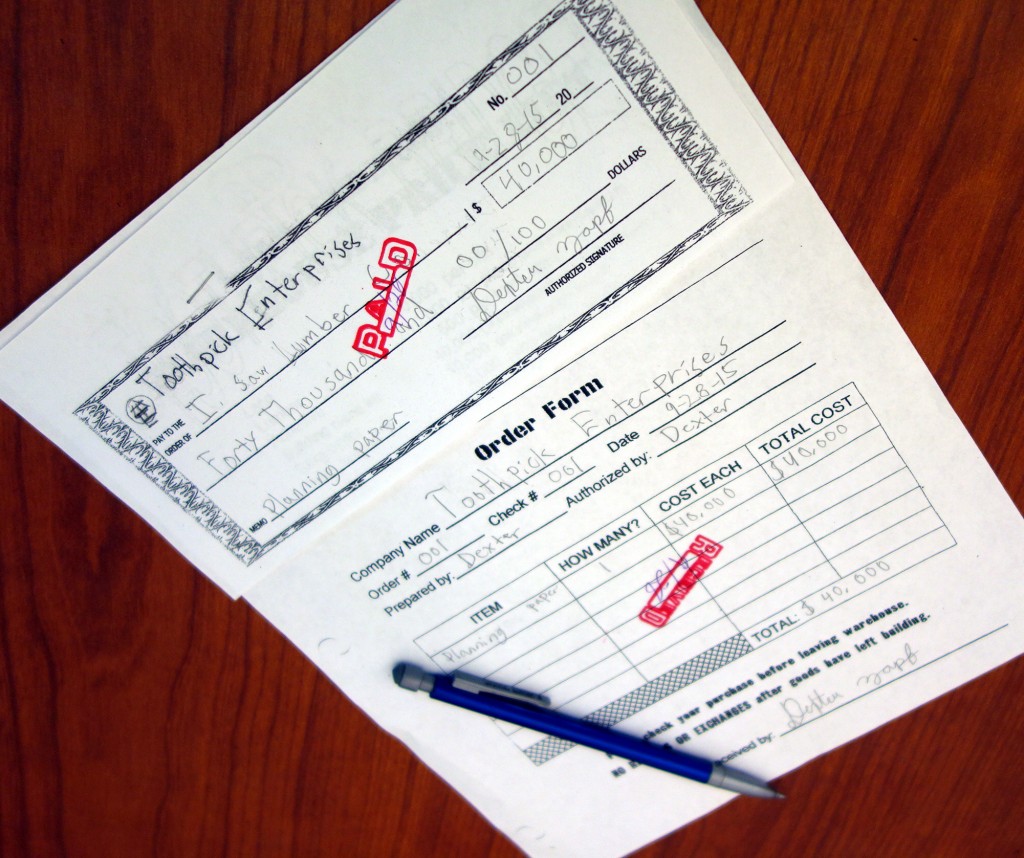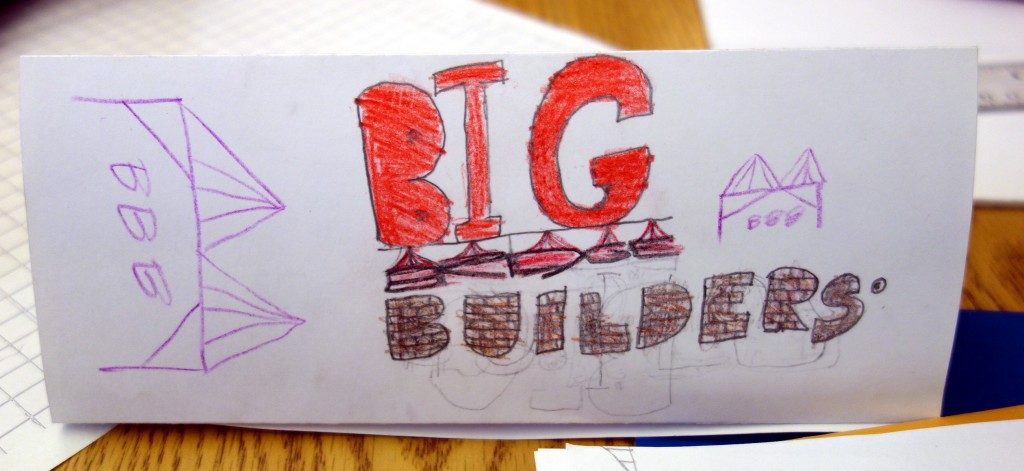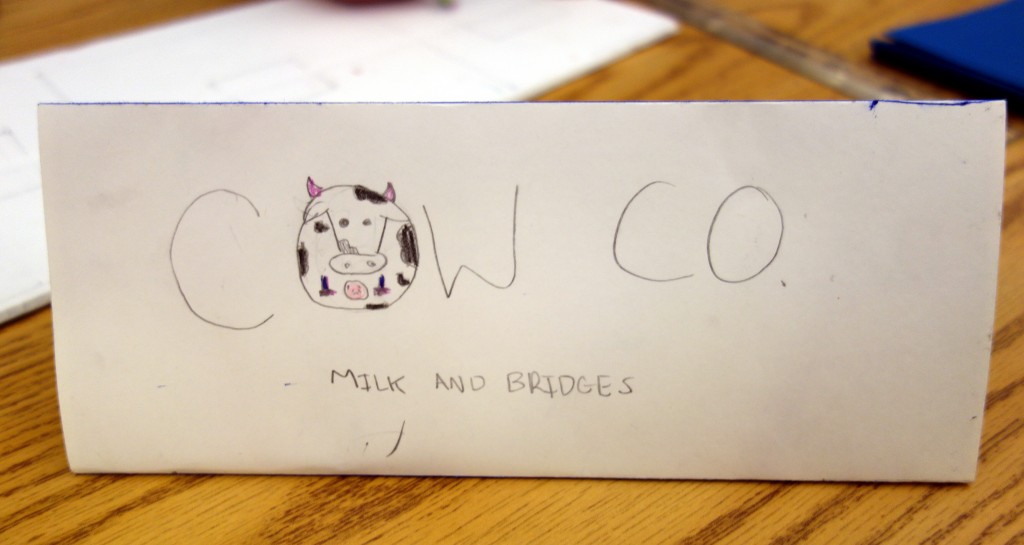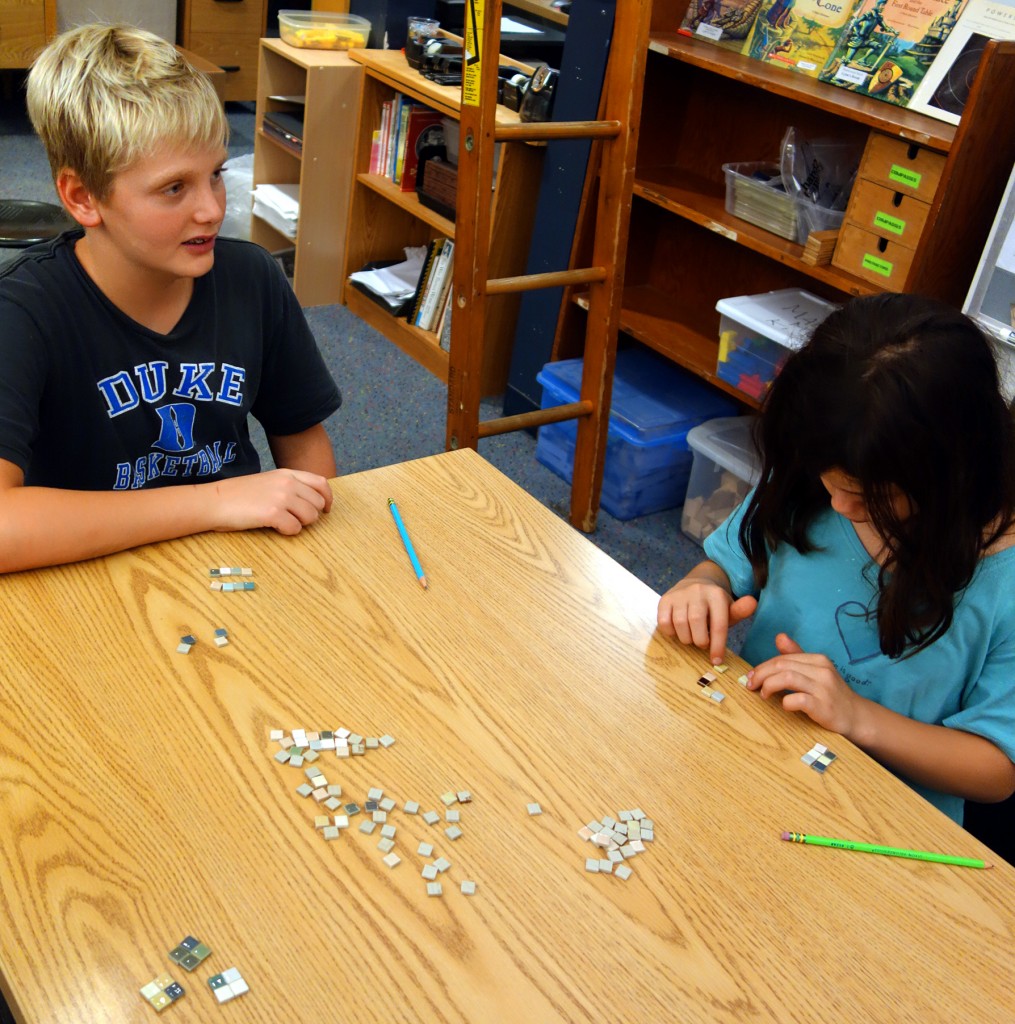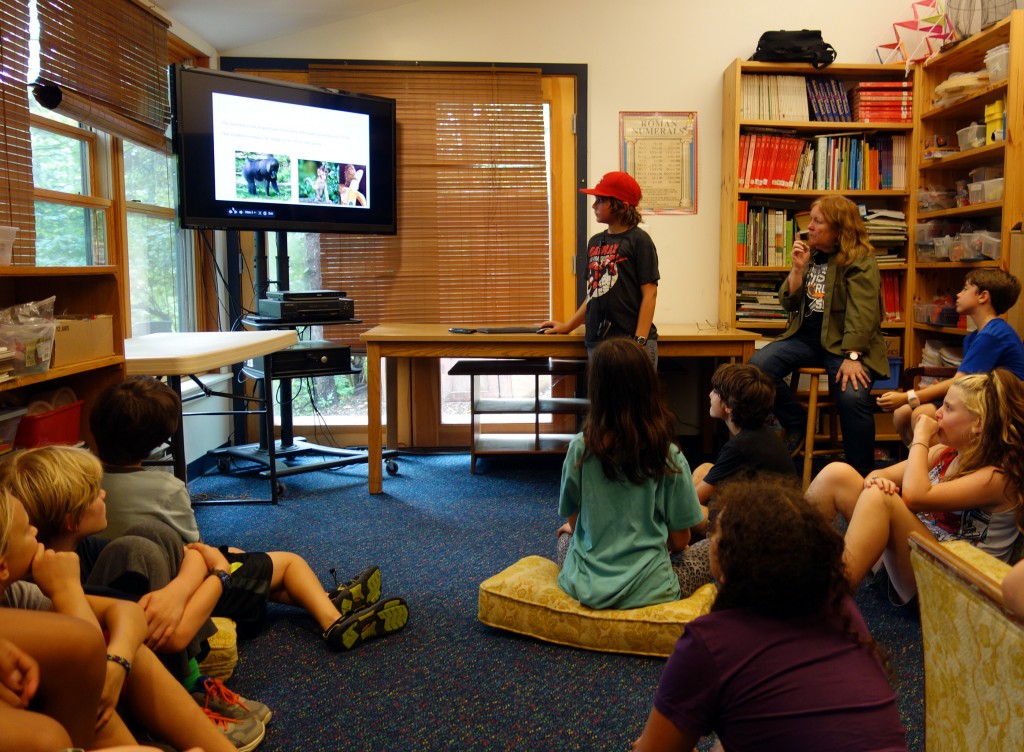Bridges: Teams have bought their land and planning paper, some have carefully measured and gotten their site approved, and many are working on drawing their plans. One of the hardest things right now for many teams is reading and understanding the “bridge code” page. It lists the requirements for the bridge: the height over the river, width of the deck, and exactly where it needs to be built on the prepared site. Several early-stage bridge designs have been sent back for major changes as they failed to meet the code requirements. Gradually, the concept is coming together, however, especially for the teams that are developing into strong partnerships.
The paperwork is another challenge: filling in the order forms completely, making out the checks to pay the I. Saw Lumber Company, keeping the company balance sheet current, and acquiring a cursive signature are all part of the job.
There is some imaginary narrative that goes with the project. Students have named their bridge companies and made signs that are displayed in their work area and will be photographed along with their finished bridge.
Spelling/Reading Patterns: We’re continuing to work on rules that related to adding suffixes. When do we double the final consonant, when do we just attach the suffix, and when do we drop the “silent e”? And why? For many students, having strong visual images of common words is the route to fewer errors, but it’s also important to have a good grasp of phonics and to read carefully what was written (as opposed to what the student intended to write). You meant to write tapping, but it might really say taping. These are the kinds of errors that a spell-checker will miss. Careful reading is needed even when the computer has flagged the error. One of the spell-checker mistakes we often see happens when a student types definately. A too-quick glance at the list of offered corrections can cause that student to replace it with defiantly because s/he hasn’t really read that suggestion all the way to the end. Reading and spelling are very closely linked.
Next week, we’ll be starting work with Spelling City, an online practice program for spelling and vocabulary, and we’ll also be starting the workbook titled Vocabulary from Classical Roots.
Math: We set order of operations aside for a while and began looking at factors, an essential understanding for — among other things — fractions. We took small tiles and found all of the rectangles we could make from 12, 16, 11, and other quantities. We also recorded them on graph paper and wrote the dimensions along the sides. Students were able to connect the visual/tactile process with multiplication. We talked about prime and composite numbers. We discussed square numbers (such as 16) and had a debate about whether squares were, in fact, a kind of rectangle. (They are.) Primes allow only one unique rectangle to be built because they ahve only 2 factors. We also argued about what constituted a “different” rectangle. Is a 2 by 8 drawing different than an 8 by 2 drawing? (It isn’t, in terms of congruence.) Later, this rectangle-building will be part of the work with do with perimeter and area.
We also played a game in two forms, one on sleeved game boards with dry erase markers and a slightly different one available online at the “Calculation Nation” website that is part of the National Council of Teachers of Mathematics resource collection.
Animal Slide Shows: Students presented their animal research this week. This was a warm-up for the larger research project on bridges, which will start next week. They chose animals that ranged from small pets to large carnivores. In the process, they learned to use more features of “Google Slides” and shared their knowledge with classmates — making eye-catching transitions, inserting images and video clips, and more. The goals were primarily that they would become comfortable with the software, understand the importance of building a source list as they go along, and appreciate the value of practice at home before delivering a public presentation.

